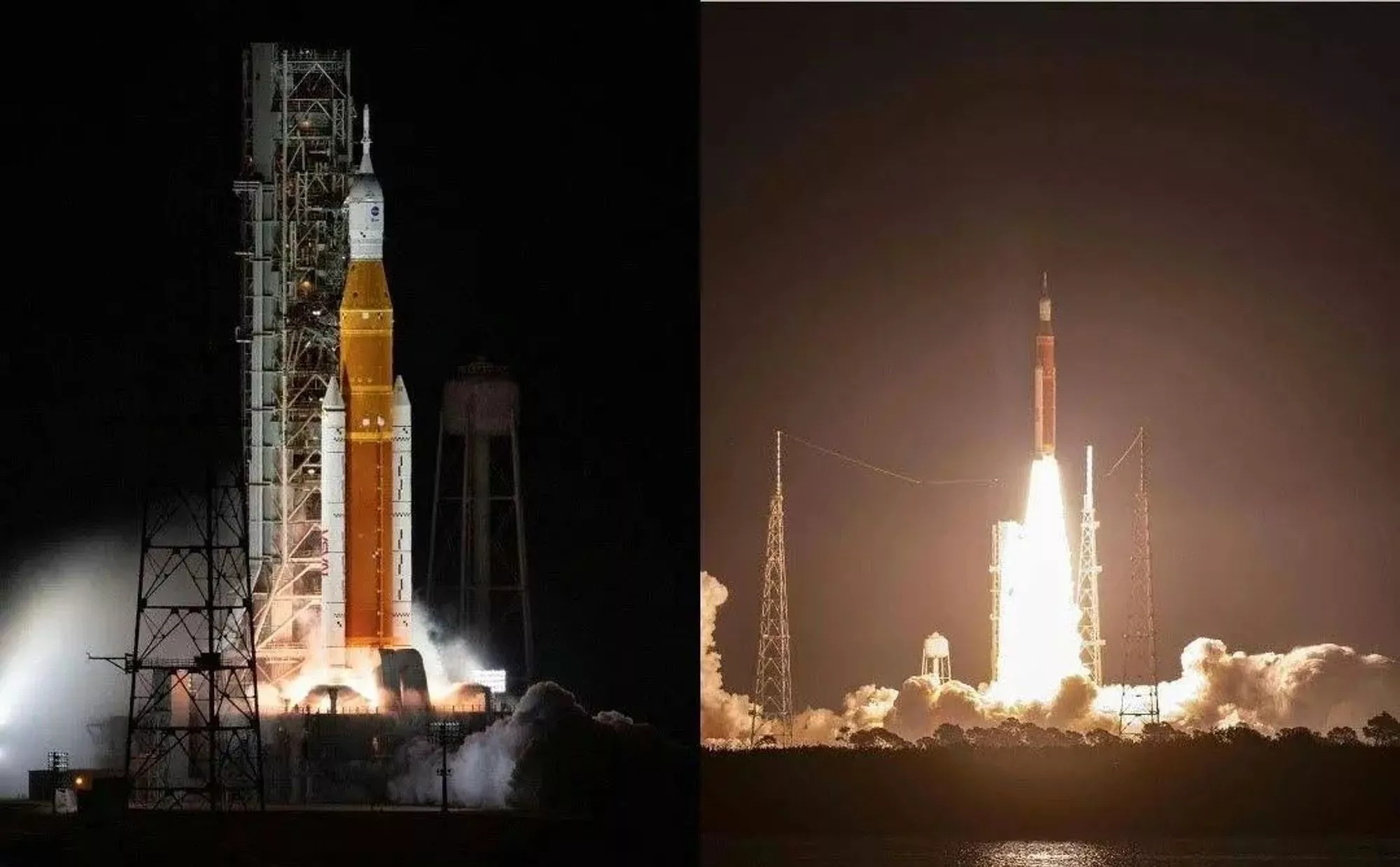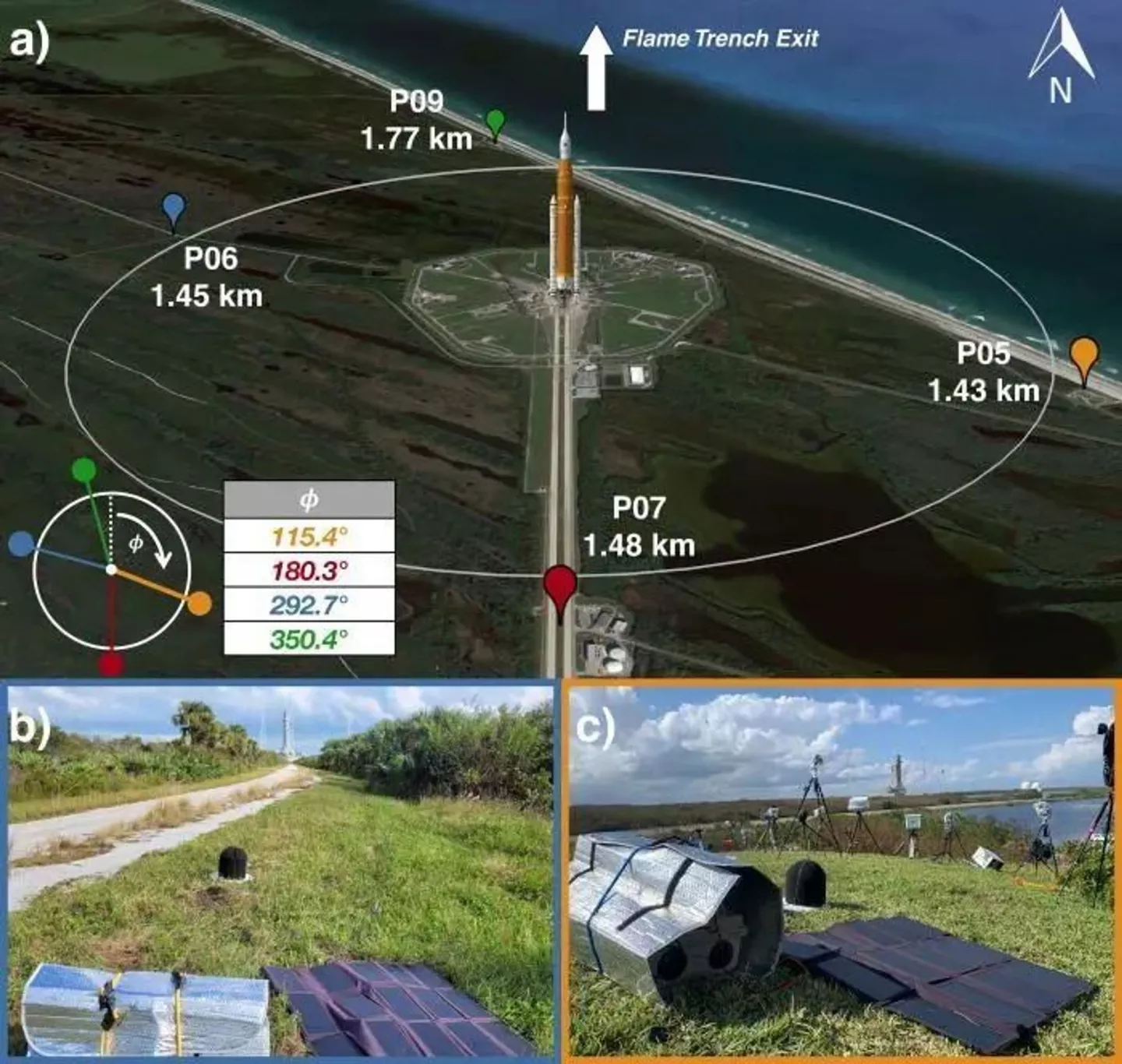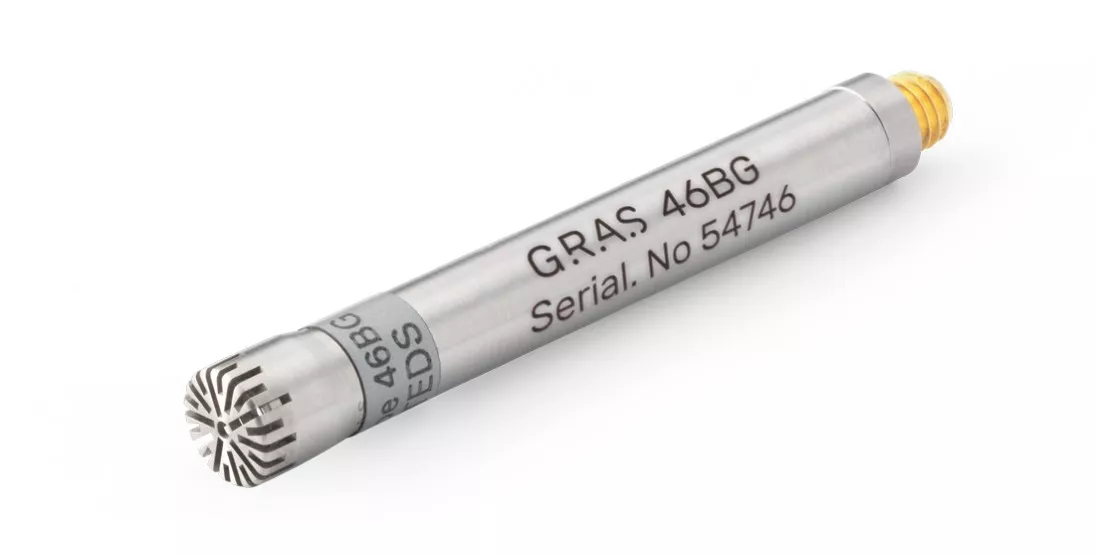
Almost 50 years after the last flight of Saturn V, the Artemis-I mission was launched by NASA's Space Launch System (SLS), marking a significant step in the larger plan to return humans to the moon and beyond. This launch not only kickstarted a new era of lunar space exploration, but it was also paired with a noise measurement operation to understand the sound produced by super heavy-lift launch vehicles. The GRAS 46BE 1/4" CCP free-field microphone was used for precise sound measurement, aiming to determine the sound power of the rocket launch.
Acoustics Measurement Description
On the 16th of November 2022, the SLS Artemis-I mission was successfully launched from the Kennedy Space Center's Launch Complex 39B (LC-39B). Acoustic measurements were carried out at various locations - ten autonomous stations within the center and seven manned stations off-center. Although preliminary analyses have been made at several of these stations, attention is particularly drawn to four stations, specifically P05, P06, P07, and P09. These stations, situated roughly 1.4-1.8km from LC-39B, are depicted in Figure (a), along with their respective distances from the launch pad. Given the access restrictions, these measurement stations were strategically arranged around LC-39B to capture any azimuthal ( φ) source directionality.


Picture (a) shows four independent measurement stations in the heart of the setup, each labelled with their respective distances and azimuths (φ) from LC-39B. The blast danger zone is highlighted with a white circle for clarity and added a model of the SLS (note that it's not to scale). The visuals of measurement stations P06 (b) and P05 (c) provide a clear view of their positions relative to the launchpad.
The Portable Unit for Measuring Acoustics (PUMA) was utilized to set up each measurement station. It comprised a weatherproof case containing a ruggedized computer, a Global Positioning System (GPS) for synchronization, 24-bit/5-V and 24-bit/30-V data acquisition modules from NI 9250 and NI 9232 that sample at 102.4 kHz, respectively, and a lithium-ion battery. The GRAS 6.35 mm (1/4 in.) 46BE condenser, free-field microphones, capable of capturing a range between 4 Hz and 80 kHz, were deployed at these stations. Even though these microphones were designed for normal incidence, it was observed that the response difference remained insignificant for other angles, up to the maximum analysis frequency of 10 kHz.

However, since the rocket noise often contains significant energy below 4 Hz, digital filtering was used to adjust the low-frequency response of the microphones, enabling them to capture frequencies extending below 1 Hz. The microphones were installed in an inverted position above a 40.6 cm (16 in.) diameter plastic ground plate and were shielded under a 3.8 cm (1.5 in.) thick porous foam windscreen. This configuration was known as the Compact Outdoor Unit for Ground-based Acoustical Recordings (COUGAR). The COUGAR setup can be seen in Figures 1(b) and 1(c). In several rocket launch, sonic boom, and jet noise measurement campaigns, PUMAs and COUGARs have proven to be successful in collecting acoustic data.
The information provided stems from a study by Majayale S. Kellison and Kent L. Gee, titled "Sound Power of NASA’s Lunar Rockets: Space Launch System versus Saturn V." Feel free to explore further details here:
GRAS 46BG 1/4" CCP
Pressure Standard Microphone Set, High Pressure

Freq range (±2 dB): 4 Hz to 80 kHz
Dyn range: 35 dB(A) to 160 dB
Set sensitivity @250 Hz (±3 dB): 3.6 mV/Pa
Performance and Accuracy
Frequency Range
Wide frequency range from 4Hz to 100 kHz (±3 dB).
Highly Accurate
Sensitivity of 3.6 mV/Pa
Dynamic Range
Range from 35 dB(A) to 160 dB.
High Signal-to-Noise Ratio
Ensuring clear and precise acoustic measurements with minimal background noise.
Design and Durability
Compact Design
Nominal microphone diameter of 1/4", easy to install and can fit into tight spaces.
Robust and Durable
Microphone diaphragm, body and unique protection grid are made of high-grade stainless-steel housing, highly resistant to physical damage and able to withstand harsh environments.
Temperature Stability
Operates within a wide temperature range (-30°C to +85°C).
Humidity Resistance
Resistant to humidity, capable of operating effectively in environments with relative humidity ranging from 0% to 90%.
Compliance and Compatibility
Calibration Traceability
Calibration chart traceable to international standards.
Compatible with CCP Supply
Operates on a Constant Current Power (CCP) supply.
IEC 61094 Class 1 Compliance
Complies with IEC 61094 Class 1 standard for GRAS 40BE ¼″ Prepolarized Free-Field Microphone.
Compliance with RoHS Directive
Complies with the RoHS Directive, certifying that it is free from hazardous substances.
Electromagnetic Compatibility
Complies with IEC 61094 Class 1 standard for GRAS 40BE ¼″ Prepolarized Free-Field Microphone.
Versatility
Can be used for a variety of applications including automotive NVH, room acoustics, aerospace noise analysis, and more.
As shown above GRAS 46BG is no doubt a reliable and top-of-the-notch pressure microphones, it is even used in NASA Space Launch System’s noise measurement. Contact us now to order the GRAS 46BG microphone set or to find out more about how it can benefit your acoustic measurement needs.







